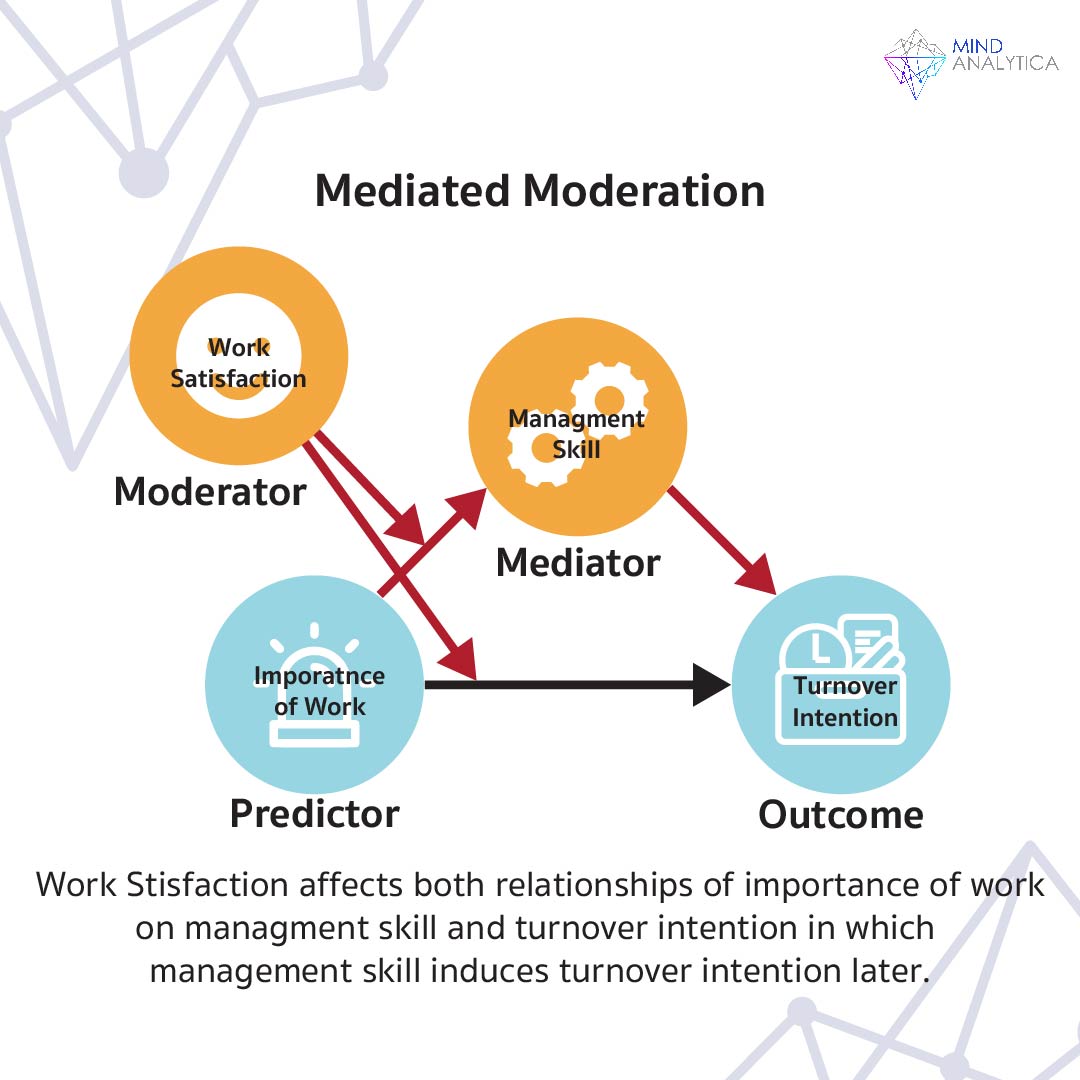Mediated Moderation
26 มิถุนายน 2566 - เวลาอ่าน 3 นาที
Mediated moderation involves a situation where the relationship between two variables changes due to a third variable. For instance, temperature and humidity influence the sensation of heat. At low temperatures, high or low humidity doesn't cause a significant difference in the heat sensation. However, at high temperatures, increased humidity intensifies the feeling of heat. This suggests that temperature and humidity interact to influence heat perception. If the combined effect of temperature and humidity affects the amount of sweat on the skin, and this, in turn, affects the heat sensation, the sweat volume becomes the mediating variable in this model called mediated moderation. At low temperatures, high humidity causes slightly more sweat accumulation on the skin than low humidity (because there's no heat to dissipate), resulting in similar heat sensations for high and low humidity. But at high temperatures, high humidity causes significantly more sweat accumulation than low humidity (since heat needs to be dissipated, but high humidity hinders sweat evaporation), leading to a much higher heat sensation under high humidity than under low humidity.
Another example concerns employees given significant work responsibilities. These employees are less likely to quit if they possess high management skills. However, if they have low management skills, those with important duties tend to quit more. In other words, job responsibility and an employee's management skills jointly affect the likelihood of quitting. Job satisfaction could be the variable explaining this joint effect. Among employees with high management skills, those with significant responsibilities have higher job satisfaction and a lower likelihood of quitting. But among those with low management skills, the ones with heavier responsibilities have lower job satisfaction and are more likely to quit.
Mediated moderation seeks to uncover the cause of the combined effects of two (or more) variables on the outcome variable. The mediating variable receives the combined influence of the predictor and moderator variables, and this combined effect is then transferred to the outcome variable. This model is a subset model of moderated mediation.
several steps. Andrew Hayes' "process" data analysis package can facilitate the analysis of moderated mediation models. Analysts can choose a model that fits the relationship between their variables and input them into the analysis. The results will reflect whether the selected model is suitable and whether there's any mediation or moderation as hypothesized.
You can learn more about how to analyze moderator variables from various online resources that provide statistical knowledge for the general public. One of these resources is provided by a team member and CEO of MindAnalytica, Dr. Sunthud Pornprasert, who is an adjunct professor in the Faculty of Psychology at Chulalongkorn University. His website, https://sunthud.com/, offers lessons that cover regression analysis, which is the foundation of moderation analysis, as well as intermediate and advanced statistics.



